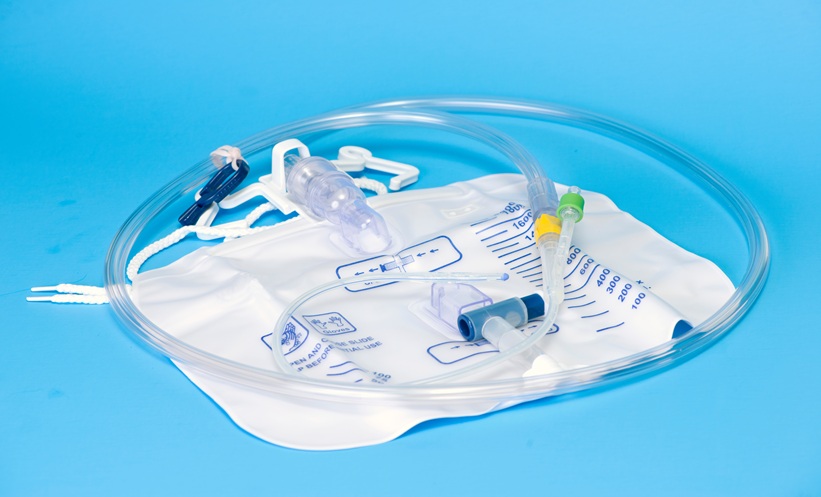Kari Tikkinen | Professor of Urology, Department of Surgery, University of Helsinki, Finland; Consultant Urologic Surgeon at the Department of Urology, Helsinki University Hospital, Finland and the Department of Surgery, South Karelian Central Hospital, Finland
Citation: EMJ Urol. 2023; DOI/10.33590/emjurol/10301566. https://doi.org/10.33590/emjurol/10301566.
![]()
What initially sparked your interest in medicine, and what led you specifically to the field of urology?
I was not sure about medicine until I was almost 20. In high school I was thinking, besides medicine, about biology, geography, and sports for university. I ended up with the most “secure” one, and I have not regretted that. Life probably would have been quite different if I had chosen something else.
In medical school, I was always interested in both medicine and surgery. I don’t think that is very typical. I think many medicine students are clearly thinking that I definitely want, or I definitely don’t want, to become a surgeon, and the same applies for internal medicine for many of those who become surgeons. But I was genuinely interested in both. I found that urology and cardiology were fields that were in between surgery and medicine, urology being the most conservative field of surgery, and cardiology the most interventional field of medicine. But despite being the most conservative, I found many fascinating surgeries and interventions in urology.
I went to medical school at the University of Tampere, Finland. Urologic research was one of the strongest fields there. At the end of medical school, I started to work on my PhD on nocturia and overactive bladder, supervised by urology professor Teuvo Tammela and epidemiology professor Anssi Auvinen. I felt that I somehow understood lower urinary tract symptom research, and felt that I could contribute a little bit. I also met many urologists that were the nicest colleagues possible. So, urology was then a logical choice for me. And again, I have no reason to regret. Urology is indeed a great field. I really enjoy the patient interaction and follow-up of patients that is more common in urology than in general in other surgical fields.
How do you balance your work as a Professor and Supervisor at the University of Helsinki alongside your surgical roles?
I was appointed as Full Professor of Urology at the University of Helsinki in June 2020. Earlier, I worked for many years as 75% clinician and 25% Academy of Finland clinical researcher. In reality, as is typical for clinician-scientists, that 25% researcher portion took substantially more hours than you would get from 25%. Since being a Professor, I have been less involved in clinical work. But I find it important and interesting to continue in clinical patient work. Currently, I work about 35% in clinical work and 65% in research. Of my clinical work, one-third is operations, mostly endourology, one-third is outpatients, including some smaller operations, and one-third is mostly urodynamics. I only do a small variety of operations to maintain or improve the quality in those.
Most of my time as Professor, I do research. But what is it in reality? The type of research we do; large-scale, randomised trials and meta-analyses with pragmatic approaches and patient-important outcomes, is, unfortunately, undervalued, and not so well financially supported in Finland. So, for a big proportion of my time, I apply for grants to keep our projects alive. The rest of the time, I oversee projects, plan new ones, guide postdoc and PhD students, and write; I really like those tasks.
I also have positions at the scientific committees of the European Association of Urology (EAU) and International Continence Society (ICS), different guideline groups, Scandinavian Journal of Surgery, and at some Finnish governmental institutes. Different kinds of tasks for these endeavours also take time. I also give some lectures for medical students and other doctors. So, I am not suffering from lack of work.
You are the lead of the Clinical Urology and Epidemiology (CLUE) Working Group. Could you discuss the aims of this group, and how it came into being?
During my post-doctoral fellowship at McMaster University, Ontario, Canada, hosted by Distinguished Professor Gordon Guyatt, I was exposed to the cutting edge of evidence-based medicine, and learned advanced methods of clinical epidemiology. The fellowship inspired me to recruit Finnish and international collaborators to create a collaborative research network, the CLUE Working Group. We work on a range of projects at the forefront of clinical epidemiology. We aim to deliver improvements in our understanding of disease management across urology and other areas of surgery and medicine. CLUE includes numerous clinicians and methodologists with a shared vision of promoting evidence-based clinical practice through practice-changing research, innovation in research methodology, and the promotion of evidence-based medicine practices and education, as well as knowledge translation. We have conducted numerous large-scale series of systematic reviews and meta-analyses, as well as large, pragmatic, randomised trials. We are just revising ethics and drug regulator applications of the Avoiding Risks of Thrombosis and bleeding in Surgery (ARTS) trial that is going to recruit more than 5,000 patients undergoing urologic, general, or gynaecologic surgery. The ARTS trial will be the first to compare the direct oral anticoagulant apixaban to no anticoagulation in these fields. This study has potential to change practice towards more patient-friendly and effective approach worldwide.
You have extensively researched population studies of lower urinary tract symptoms, particularly nocturia and overactive bladder. Your PhD thesis on this topic achieved international recognition. Could you discuss your findings, and the importance of this topic?
My PhD thesis was based on the Finnish National Nocturia and Overactive Bladder (FINNO) Study. We invited a random sample of 6,000 Finnish men and women aged 18–79. Approximately two-thirds participated; a big thanks to all of them! In the population-representative FINNO Study, approximately 28% of subjects reported one, 10% two, 2% three, and 1% four or more void(s)/night. Nocturia was more common among young females than young males, but more common among males than females in old age. Most subjects reported small bother from nocturia with two nocturia episodes, and moderate bother only from three nocturia episodes. Two nocturia episodes impaired health-related quality of life compared to those with no nocturia. We found several important risk factors for nocturia, highlighting its multifactorial aetiology.
We also studied so-called overactive bladder syndrome. We found that the prevalence of overactive bladder was 6.5% for males and 9.3% for females, i.e., approximately half of that reported in earlier studies. We found that in the earlier literature, many methodological flaws had led to overestimation of prevalence estimates. For me personally, this part of the thesis led to understanding how important the definitions of diseases can be. If we are not careful in using definitions, we can easily overdiagnose and overtreat, or underdiagnose and undertreat, conditions. Many current definitions of diseases are leading to the overuse of scarce resources in healthcare systems.
You chaired the European Association of Urology (EAU) Guideline on Thromboprophylaxis in Urological Surgery, published in 2017. This was the first specific surgical thromboprophylaxis guideline, which holds a great deal of potential in clinical practice. How did you come up with this guideline, and why is it so important?
I did my 3-year postdoc at McMaster University between 2011–2013. I had also started as guideline member of the EAU guideline of male lower urinary tract symptoms, so I knew some of the EAU guideline leaders. At McMaster we started to do research on thromboprophylaxis of surgical/urologic patients. EAU leaders asked my opinion if we should have an EAU thromboprophylaxis guideline. I thought not necessarily, as other guidelines were so large and so urology-specific, such as prostate cancer, kidney cancer, or male lower urinary tract symptoms, that thromboprophylaxis felt somewhat small compared to them.
Despite this comment, about year later, I was asked to chair the guideline. I collected a great group, and we started to work hard. We wanted to do it properly, and that is why it took about 4 years. The first step was to establish procedure-specific risk of thrombosis and bleeding. This had never been done in any field of surgery before. After this massive amount of work, the project that we call ROTBUS (procedure-specific risks of thrombosis and bleeding in urologic surgery), we were able to provide that first ever procedure specific guideline of thromboprophylaxis in any field of surgery.
This work has been very rewarding, and important for patients. We just finalised a similar kind of work for more than 100 general abdominal and gynaecologic surgery procedures, and are starting a large pragmatic trial that examines apixaban in urologic, general abdominal, and gynaecologic surgery patients. We welcome centres to join this potentially very practice-changing ARTS trial by contacting me.
You are National Principal Investigator of the SOLIDARITY trial on COVID-19 treatments, led by the World Health Organization (WHO). Please let us know the aims of this trial, and any important findings to date.
When the COVID-19 pandemic started, I saw that clinicians were increasingly using hydroxychloroquine and other experimental treatments without trustworthy evidence. I felt that I had to do something. I had trial leadership experience from leading the Antibiotic Prophylaxis Before Shock Wave Lithotripsy (APPEAL) trial; we recently completed the recruitment of more than 1,600 patients and are analysing the data. So, I tried to start a COVID-19 trial in Finland, and was finally able to convince some folks to work together.
In the end, as part of the global WHO Solidarity trial, we were able to launch a nationwide, randomised trial that included all university hospitals, and many other major hospitals in Finland. We first studied remdesivir, and are currently studying imatinib and infliximab. I expect we will stop recruitment during the upcoming months, as the pandemic is not as prevalent. We have so far found that remdesivir decreased mortality in COVID patients, and the earlier you start, the better. We are still not sure of the effects of imatinib or infliximab. In Finland, we also follow up all these patients for 2 years post-hospitalisation regarding recovery and potential long-COVID symptoms.
I am very glad that we were able to launch SOLIDARITY Finland. Besides providing high-quality evidence for future patients, we have learned a lot about how to conduct large, pragmatic global trials.
As an educator, what are you working on at the moment? Where will your focus will lie in future?
Teaching young colleagues is a privilege. I hope I can continue contributing through teaching and studying how to diagnose and treat urologic patients and beyond. For me, it is important that we conduct more high-quality research so that we know better what to do. We also need to include peoples’ values and preferences in the decision-making process. With all our technical and scientific advancements and increasing commercialisation, there is risk that physicians forget, or don’t have time, to provide kind care for our patients. These issues are very important, and I will keep educating about them. In terms of research, I am constantly struggling to get funding for this kind of patient-centred, evidence-based research in Finland. But I will keep my eyes open for all opportunities.







